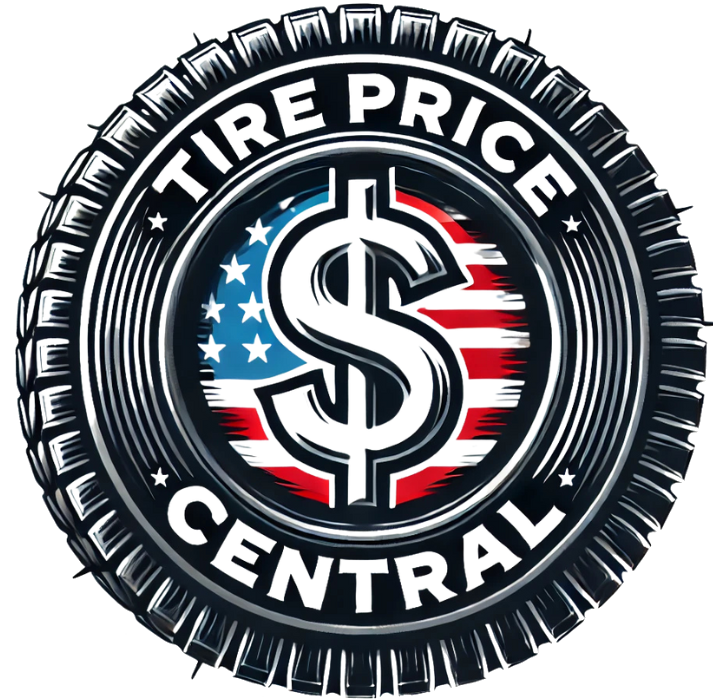
Wheel Sizes Demystified: A Guide by Tire Price Central
Thinking about upgrading your ride with a fresh set of wheels? Whether it’s for aesthetics, off-roading, or winter driving, picking the right wheel size is crucial. While replacing original equipment (OE) tires is fairly straightforward, adding wheels into the equation introduces more complexity. The right wheel size and specifications vary depending on your vehicle and its intended use, so understanding your options is key.
To simplify the process, let’s answer some common questions about wheel sizes and aftermarket wheels.
What is Wheel (Rim) Width?
Wheel width refers to the measurement from one wheel edge (or lip) to the other, across the wheel’s face. This width is typically measured in inches and increases in ½-inch increments.
Vehicles may have the same wheel and tire width on all four wheels (a square setup) or different widths between the front and rear (a staggered setup). Staggered setups are common in performance and sports cars to improve handling.
Choosing the Right Wheel Width
Selecting the correct width depends on clearance and purpose.
Understanding Clearance
Clearance refers to the space between your wheel and tire setup and surrounding vehicle components. Some trucks and SUVs have room for significantly wider wheels, while others require a more precise fit to avoid rubbing or modifications.
Key factors to consider:
- Have an expert measure clearance to ensure a proper fit.
- Evaluate both front and rear axles while the vehicle’s suspension is loaded.
- Account for steering clearance by checking space when turning from lock to lock.
- Factor in additional weight if you frequently haul heavy loads or tow trailers.
Purpose-Driven Wheel Width Selection
- Performance & Track Use: Wider wheels and tires improve grip and handling.
- Winter Driving: Narrower wheels help tires cut through snow and slush for better traction.
- Off-Roading: Wider setups provide more contact patch for improved traction on rough terrain.
- Aesthetic Upgrades: Maintaining OE width ensures factory handling characteristics remain unchanged.
How to Tell if New Rims Will Fit Your Tires
If you want to upgrade your wheels while keeping your original tires, it’s best to stick with stock wheel width and diameter. Changing the rim diameter—such as switching from an 18-inch to a 19-inch wheel—means your old tires won’t fit properly.
How to Find Your Wheel Size
Your tire size provides clues about your wheel’s diameter. The final number before the load index and speed rating in your tire size indicates the wheel diameter in inches. For example:
- 225/65R17 means the tire is designed for a 17-inch wheel.
To find your wheel’s width, consult your vehicle’s owner manual or check with a dealership service department.
What is Wheel Diameter?
Wheel diameter is the measurement from one end of the wheel to the other, across its face. This is often the most noticeable aspect of wheel size and a major factor in vehicle aesthetics. Larger wheels often provide a sportier look, but selecting the right size is about more than just appearance.
Wheel Offset & Backspacing: What You Need to Know
Wheel Offset refers to the distance from the wheel’s mounting surface to its centerline. Offset affects how far a wheel sits inside or outside of the wheel well. Proper offset ensures the wheels don’t rub against suspension components.
Wheel Backspacing measures the distance from the wheel’s mounting surface to the back edge of the rim. This factor influences clearance for brake calipers and suspension components.
Matching Tires and Wheels
- Wheel diameter must match tire diameter (e.g., a 215/65R17 tire requires a 17-inch wheel).
- Wheel width should be compatible with tire width—off-road tires often have a wider tread than the wheel to allow for more flexibility at lower air pressures.
- For performance cars, matching the wheel width to the tread width maximizes grip and handling.
What Do Bigger Wheels Do for a Car?
Larger wheels are often chosen for style, but they also influence performance:
- Handling improvements: A larger wheel with a lower-profile tire can enhance steering response.
- Increased grip: Wider wheels provide a larger contact patch for improved traction.
- Off-road capability: Larger wheels with thicker tires improve off-road durability.
- Sportier aesthetics: Bigger wheels enhance a vehicle’s visual appeal.
Final Thoughts
Selecting the right wheels involves more than just picking a bigger or flashier set. Understanding clearance, width, diameter, offset, and backspacing ensures your wheels fit correctly and enhance your driving experience.
At Tire Price Central, we offer a wide selection of wheels and tires to match your needs—whether for performance, off-road adventures, or everyday driving. Have questions? Contact our experts today!

